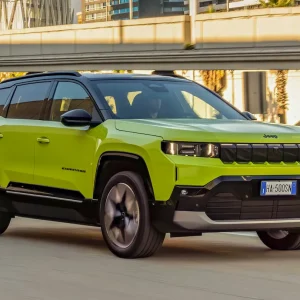Cars like Kia’s own attention-grabbing EV6 may pick up more headlines, but it’s models like the more modest Niro that will do much of the donkey work around UK fleet electrification, with the outgoing version of the car the country’s second-best selling pure EV over the past six quarters. The new second-generation Niro, like the first, is available as a conventional hybrid or plug-in hybrid as well as a fully electric model, but it’s the latter version we’re concentrating on here. And, having sampled the mid-range 3-grade Niro EV on the international launch, we’re now driving the entry-level 2 version on UK roads.
Despite its lowly status, the 2 (like most UK Kias there is no 1 available) is far from bereft of standard equipment. For instance, you still get the full 10.25in driver display screen that comes with higher spec models, and although the central infotainment touchscreen is reduced from 10.25in to 8in with this spec this is no major hardship, as most of the functions are retained (although there’s no sat-nav, so drivers will need to connect a smartphone-based solution instead, which we’re sure many would be looking to do anyway). Like the EV6, the Niro comes with a touch button bar below this screen that switches between showing either ventilation or audio controls at the driver’s discretion – which sounds complicated, but in practice is a really neat solution to retaining the easy use of proper controls (rather than burying everything in touchscreen menus), but at the same time not swamping the dashboard with buttons.
Some interior trim materials do give away the 2’s entry-level status, particularly on the doors and lower dashboard, but most regular touch points are better. Other notable omissions compared with 3 spec include vehicle-to-device charging functionality, and there’s no heat pump option, although smart cruise control and a reversing camera are among the other features, which are retained.
Rear legroom is reasonable, and headroom good – and rear seat passengers are likely to appreciate the cleverly placed USB ports on the inside edges of the front seats. There’s a good-sized boot at 475 litres.
There’s only one powertrain option with the Niro EV, a combination of a 204hp electric motor and a 64.8kWh battery, with the latter providing a range of up to 285 miles on a combined cycle. Although this doesn’t deliver the outrageous acceleration figures of some EVs, the immediate torque of the powertrain, with a power output that’s hardly inadequate, means there’s all the performance you could ever need for real-world manoeuvres such as overtaking on motorways – although here you will also discover quite a bit of tyre roar audible at cruising speeds.
On twistier roads, you can feel the benefit of having an EV battery mounted low in the vehicle, as it feels very composed in bends and shifts direction adroitly, although the steering is too uncommunicative for it to be a proper driver’s car, and the limits of grip from the tyres aren’t particularly hard to find. Ride quality is well resolved most of the time, but the battery weight does occasionally catch the suspension out.
Overall, the new Niro EV remains a very commendable electric car, and drivers given the 2 version shouldn’t feel too short changed – although higher-spec versions do enough to justify the extra outlay for those with the budget.
Kia Niro EV 64.8kWh 2
P11D: £36,190
Residual value: 47.8%
Depreciation: £18,862
Fuel: £3,820
Service, maintenance and repair: £1,445
Cost per mile: 40.21p
Range: 285 miles
CO2 (BIK %): 0g/km (2%)
BIK 20/40% a month: £12/£24
Luggage capacity: 475 litres
Engine size/power: 64.8kWh/204hp





